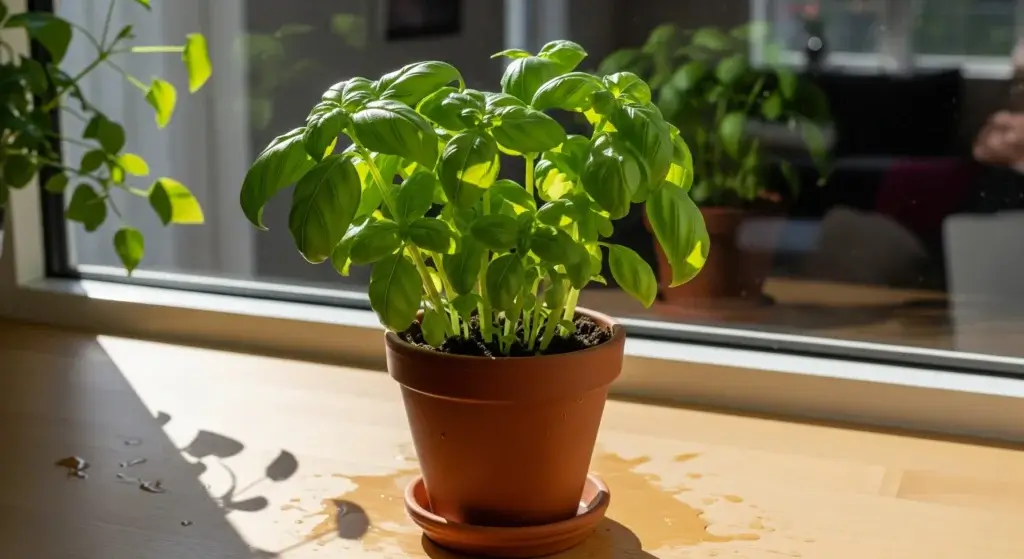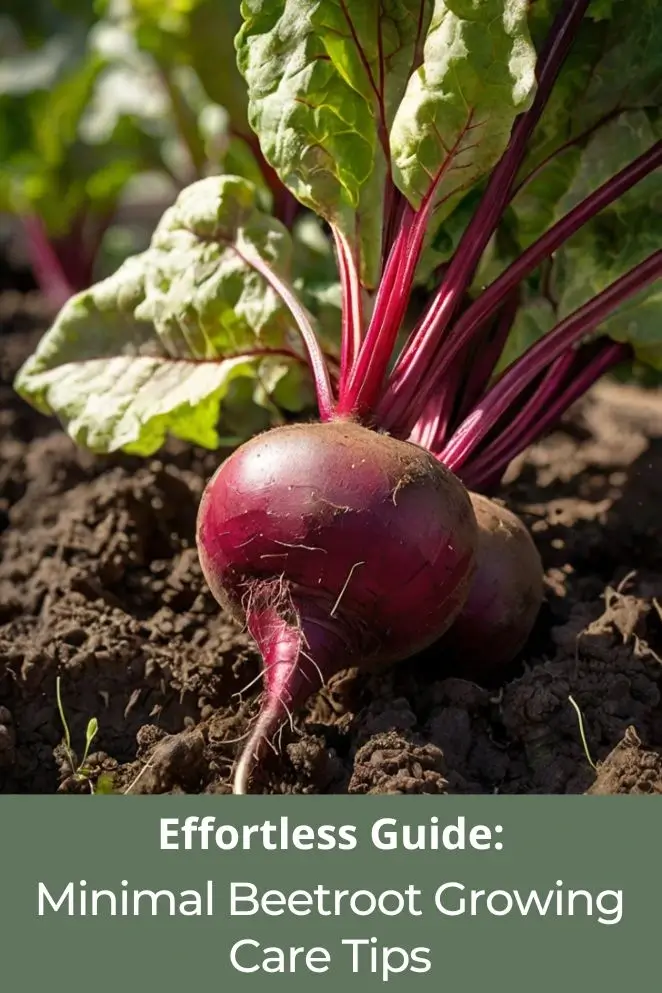
Beetroot is one of the easiest veggies to grow—seriously, it’s like the houseplant of the garden world.
If you want fresh food without babysitting your plants 24/7, this root’s for you.
This quick guide shows you how to grow beetroot from seed to harvest with barely any effort.
No green thumb? No problem. Beetroot doesn’t care.
Why Beetroot is the Ultimate Low-Maintenance Vegetable
Beetroot doesn’t need much to be happy—seriously, it’s the laid-back friend of the veggie world.
Here’s why beetroot wins when it comes to low-effort gardening:
It doesn’t freak out when it’s thirsty
Once it’s got a solid start, beetroot sends down a deep root that pulls water from way underground.
So, while your lettuce is crying for a drink, beetroot’s just chilling, totally fine with less watering.
Bugs aren’t that into it
Most pests skip beetroot like it’s the last slice of pineapple pizza.
That means you won’t be out there every other day spraying or inspecting leaves like a detective.
It keeps growing when it’s cold
Light frost? Cool weather? Beetroot shrugs it off.
You don’t have to wait for the perfect sunny day to plant it. It just rolls with the season.
You can keep planting it for months
Start in spring, and toss in a few more seeds every couple of weeks until mid-summer.
You’ll keep pulling fresh beets out of the ground through fall.
No pressure to get it all right in one go—just plant and repeat.
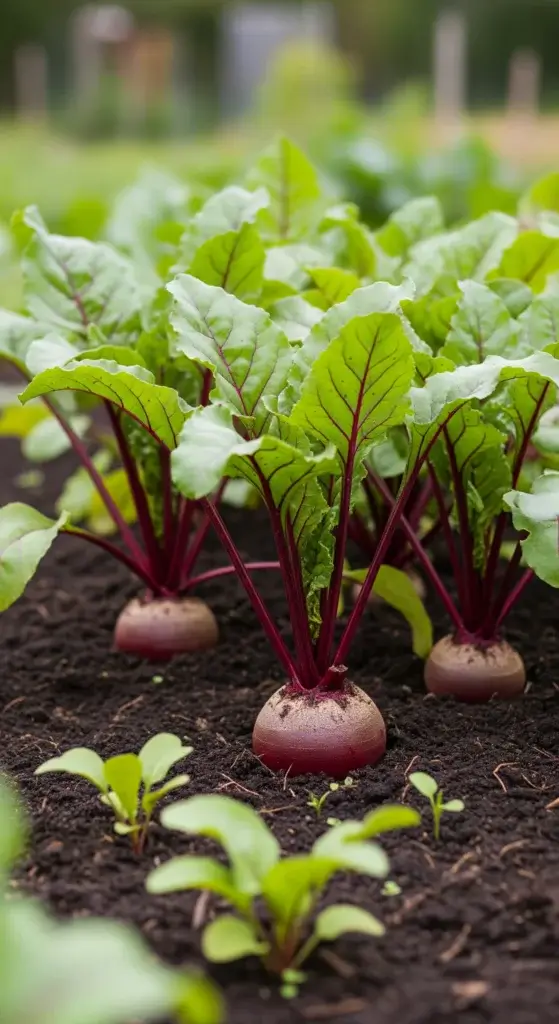
Essential Site Selection and Soil Preparation
If you want your beets to grow with almost no work, you’ve gotta start strong—with the right spot and soil.
Do this once, do it right, and your future self will thank you.
Sunlight requirements
Beets love sun—give them at least 6 hours of it if you can.
But honestly, they’re pretty chill and can still grow with just 4 hours of direct sunlight a day.
You can even tuck them under taller plants like corn or tomatoes, and they’ll still do their thing.
Pro tip: Aim for a spot that gets morning sun. It helps dry off the leaves faster (goodbye, fungal diseases).
And when summer gets hot, a little afternoon shade keeps them cool and happy. Total win.
Soil preparation
Beets aren’t high-maintenance, but they do care about their underground setup. Here’s what matters:
Drainage is non-negotiable
If your soil turns into a swamp after rain, your beets will rot. Not fun.
Use raised beds or mix in chunky stuff like bark, compost, or shredded leaves to help water flow out.
Beets need space to stretch those roots down deep.
Add organic matter
Dump in compost or old manure—anything rich and crumbly.
This gives your beets slow-release food all season. That means you won’t have to keep feeding them later.
It also fluffs up the soil so roots can grow without hitting brick walls underground.
Seed Starting and Planting Strategies
Beetroot makes planting super easy—no need for indoor seed trays or transplanting drama.
Just drop the seeds in the ground and let nature do its thing. Here’s the low-effort way to start strong:
Soak the seeds first
Beet seeds have a tough outer shell, kind of like candy-coated chocolate (except not tasty).
To help them sprout faster, soak them in warm water—around 80–85°F—for 6 hours before planting.
This softens the shell and gets germination going quicker. Less waiting, more growing.
Direct sow like a pro
Beets are big-seeded and easy to handle—no tweezers required.
Plant two seeds every 10 cm (about 4 inches) in a row.
Once they sprout, keep the stronger one and snip the weaker one. Easy. No guessing. No guilt.
Space rows about 25 cm (10 inches) apart. That gives them breathing room and keeps diseases away without you having to play plant doctor later.
When to plant? You’ve got options
Start sowing in early spring as soon as the soil isn’t frozen solid. Keep planting new rows every 2–3 weeks until mid-summer.
This way, you won’t get 50 beets at once and panic.
Instead, you’ll get a steady stream of fresh beets—like a veggie subscription box you planted yourself.
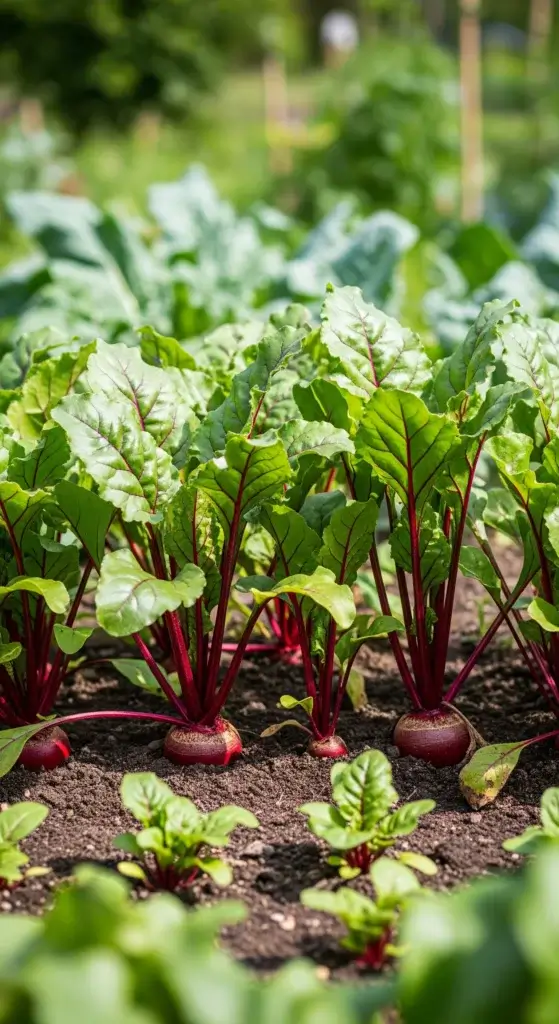
Minimal Care Watering and Maintenance
Once your beets are up and growing, you don’t have to do much—just a few smart moves and they’ll mostly take care of themselves.
Here’s the low-effort way to keep them happy:
Water deep, not often
Forget daily sprinkles. Water once a week, but make it count—deep watering helps the roots grow down instead of staying shallow and needy.
Keep the soil moist, not soggy. If the soil gets too dry, your beets can go woody or split.
Nobody wants tough or cracked roots. Stay consistent and you’ll avoid all that.
Mulch
When your beets hit about 4 inches tall, cover the soil with a 2–3 inch layer of mulch—compost, straw, shredded leaves, whatever you’ve got.
Mulch does three things for you:
- Holds moisture (less watering)
- Blocks weeds (less hoeing)
- Keeps soil cool (less stress for the plant)
One step, three problems solved.
Beat weeds without the constant hoe show
Yes, you should hoe around your plants now and then. But if you do it right from the start, you won’t have to keep doing it.
- Before you plant: Clear the bed of all weeds—roots and all. No shortcuts.
- After that: Let mulch or quick-growing “living mulch” like radishes or lettuce help block out weeds naturally.
These buddy plants grow fast and get out of the way before your beets need the space. It’s like having garden roommates who clean up after themselves.
Temperature Management and Seasonal Considerations
Beetroot loves cool weather. It’s not into heat waves or tropical storms.
If you want them to grow well with little work, just follow the seasons and give them a bit of shade when needed.
Heat protection
Beets do best in spring and fall when the weather’s chill. If you grow them in summer, help them out by blocking that harsh afternoon sun.
Here’s how:
- Plant taller crops like corn or sunflowers on the south side of your beets. Instant shade.
- Use shade cloth during crazy hot months. No need to get fancy—a cheap tarp works too.
Skip planting during the peak of summer or the middle of monsoon season. Beets hate soggy roots and blazing sun.
Seasonal timing
Don’t fight nature—work with it. Plant in early spring or fall when temps are cooler and rain is more regular.
Less heat means less watering. Fewer bugs too. Win-win.
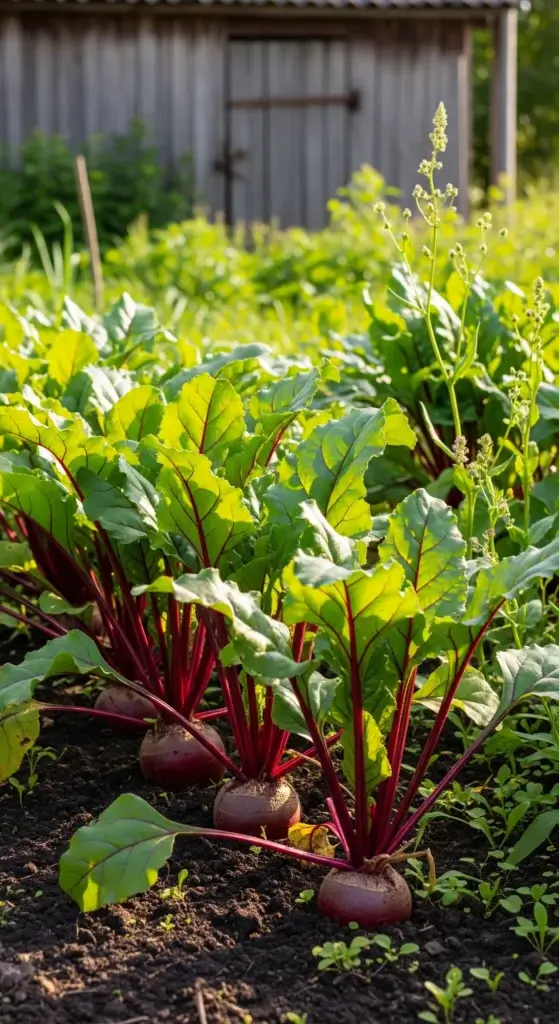
Container Growing for Ultimate Convenience
Short on space? No garden? No problem. Beets grow great in pots on a sunny balcony or patio.
It’s one of the easiest ways to grow your own food with almost zero hassle.
Pick the Right Pot
Go for containers that are at least 12 inches deep. Beets have long roots, and they need space to stretch.
Wider is better than taller—more room for more plants, and they won’t be squished together.
Use the good stuff
Skip the garden soil. Use a high-quality potting mix or veggie blend like Tui Vegetable Mix.
It drains well, holds just enough water, and you don’t have to prep anything. Just open the bag, fill the pot, and plant. Done.
Water smarter, not harder
Pots dry out faster than garden beds, so you’ll need to water a bit more often.
But the upside? You control the moisture.
No muddy mess or soggy roots like in heavy soil. Just check with your finger—if the top inch is dry, it’s time to water.
Troubleshooting Common Issues with Minimal Intervention
Even chill crops like beetroot can throw a curveball now and then.
Here’s how to handle the usual issues without turning into a full-time plant parent.
Problem: Seeds didn’t sprout
If your beet patch looks like a ghost town, blame old seeds or bad soil.
Fix it:
- Buy fresh seeds each year—don’t gamble with leftovers.
- Prep your soil right: loose, well-drained, and not packed like concrete.
- Raised beds work great for this. Beets like breathing room.
Problem: Roots are tough or cracked
Beets got woody or split open like they’re mad? That’s from uneven watering.
Fix it:
- Water consistently. Don’t let the soil go bone-dry, then soak it. Beets hate that.
- Aim for steady moisture—not soggy, not dry. Just chill.
Problem: Plants growing in slow-mo
If your beets are barely moving, they’re probably fighting for space or light.
Fix it:
- Make sure they get enough sun—at least 4 to 6 hours a day.
- Don’t overcrowd them. Thin early so they’re not elbowing each other for nutrients.
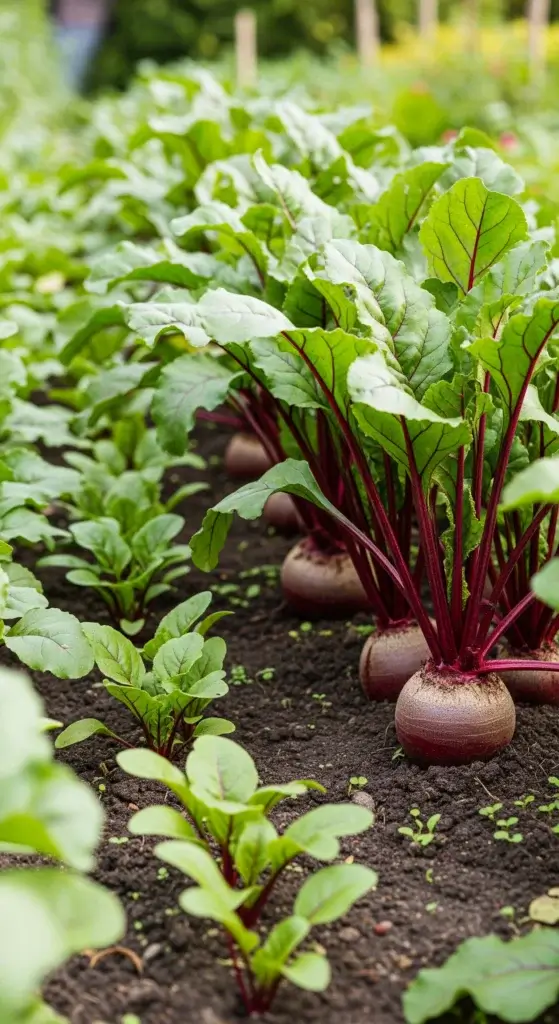
Advanced Minimal Care Techniques
Once you’ve got the basics down, these next-level tricks make beet growing even easier—and boost your harvest without extra effort.
Succession planting = No overload
Don’t plant all your seeds at once unless you want 30 beets staring at you in two months.
Do this instead:
- Sow a small batch every 2–3 weeks.
- You’ll get fresh beets over a longer stretch—and you’ll learn what works better each time.
- It’s like a slow drip of success instead of one big veggie explosion.
Plant beets with their besties
Beets play nice with onions, garlic, and brassicas (like broccoli or kale).
These buddies keep pests away naturally, no sprays needed.
Bonus: You’ll use your space better and do less pest control. Like a group project where everyone actually pulls their weight.
Skip the tilling, keep the chill
If you’re into no-dig gardening, beets love it too.
Just mulch heavily around the plants. It keeps weeds down, holds moisture, and protects all the good stuff happening in the soil.
Less digging = less work = happier soil.
Final Word: Beets Are the MVP of Lazy Gardening
Beetroot grows like a champ with barely any effort—as long as you set it up right. Good spot, decent soil, steady water, and you’re golden.
Use the tips in this guide to grow beets that basically take care of themselves.
No daily check-ins, no drama—just reliable harvests and fresh food on your terms.
If you want homegrown veggies without babysitting your garden, beets are your go-to. Simple, satisfying, and totally low-key.



